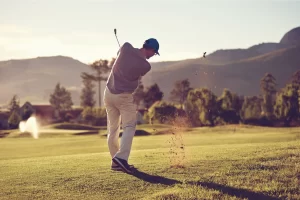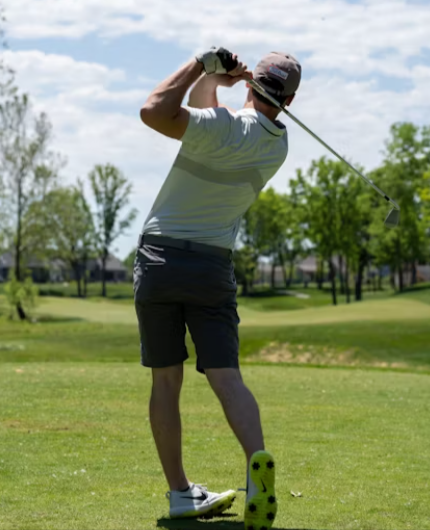Do you hit down on the ball with irons? This fundamental question lies at the heart of improving performance and accuracy on the golf course. Whether you’re a seasoned player or an enthusiastic beginner, understanding the mechanics behind striking the ball with irons can be pivotal. Let’s analyze the intricacies of this aspect of the game.

Understanding the Mechanics of Striking with Irons
Striking the ball with irons requires a nuanced understanding of golf’s physics and technique. It’s essential to comprehend why the mechanics of hitting down on the ball matter.
The Golf Swing Dynamics
The golf swing incorporates a series of complex movements that need to be coordinated effectively. At the core of a well-executed iron shot is the ability to hit down on the ball, which refers to the downward angle of attack. This angle allows the club to compress the ball and create backspin, achieving a higher and more controlled trajectory.
- Why hitting down is crucial: Hitting down ensures that the clubface meets the ball before the ground, maximizing contact and energy transfer. By creating a descending blow, the spin generated helps the ball climb high and land softly, optimizing both distance and control.
How Irons Differ from Woods
Irons and woods have distinct roles in golf, and understanding these differences will help illuminate the necessity of hitting down with irons.
- Iron Design: Irons are designed with a smaller clubhead and a greater degree of loft, which inherently favors a downward strike. The sharp leading edge of an iron helps it cut through the turf while contacting the ball.
- Wood Design: Woods, in contrast, have a larger head and less loft, which requires a sweeping motion to maximize distance.
The Technique: Mastering the Downward Strike
How does one master the downward strike with irons? This technique involves a combination of grip, stance, and swing mechanics.
Perfecting Your Grip
How you hold the club significantly impacts your swing path and the angle of attack. A proper grip ensures that the clubhead remains stable throughout the swing.
- Grip Pressure: Light but firm grip pressure is necessary—too tight, and it restricts movement; too loose, and control is lost.
- Grip Style: Whether you use the Vardon, interlocking, or ten-finger grip, consistency is key.
Establishing the Right Stance
Your stance sets the foundation for the swing. It directly affects balance and the ability to execute a descending blow effectively.
- Ball Position: For most iron shots, positioning the ball slightly forward in your stance helps promote a downward strike.
- Posture and Alignment: Maintain a straight back and bend slightly at the hips. Proper alignment with the target ensures that your swing stays on the correct path.
Swing Mechanics
Executing the swing involves precise timing and body coordination. The downward strike is accomplished during the transition from backswing to downswing.
- Backswing: Start with a smooth takeaway, maintaining width and turning your shoulders fully away from the target.
- Downswing: Transition by shifting your weight onto your front foot, keeping wrists firm, to ensure the clubhead descends on the ball.
Common Mistakes and How to Avoid Them
Despite understanding the theory, common mistakes can still obstruct your ability to hit down effectively. Recognizing and correcting these errors can enhance your game.
Casting the Club
Casting occurs when the wrists unhinge prematurely in the downswing, causing a loss of power and a less distinct angle of attack.
Scooping the Ball
Attempting to lift the ball rather than hitting down results in topped shots with insufficient loft.
- Fix: Focus on striking the ground after the ball, promoting proper loft and spin.
Weight Distribution Errors
Improper weight distribution can lead to poor contact and reduced power.
- Fix: Emphasize maintaining weight on the front foot through impact.
Analyzing Ball Flight and Impact
Understanding ball flight characteristics can further refine your technique. Observing the ball’s trajectory offers clues about the quality of your strike.
High, Soft Shots
A high trajectory with a steep descent indicates a successful downward strike, providing control and predictability.
Low, Hard Shots
Conversely, low shots with excessive roll often signal insufficient downward strike or a mishit.
Divot Patterns
The pattern and depth of divots provide insight into the swing plane and contact point. A healthy divot should begin just past the ball, revealing a descending clubhead path.
Training and Drills
Developing proficiency in hitting down on the ball requires practice and targeted drills.
Impact Bag Drill
Using an impact bag helps train the body to deliver a compact strike by promoting proper wrist position and weight shift.
Divot Feedback Drill
Practicing on a range with soft turf can offer immediate feedback on divot quality, guiding adjustments to swing technique.
Slow Motion Swings
Practicing slow motion swings enhances muscle memory and allows focus on perfecting mechanics.
Professional Insights
Insights from professional golfers and instructors can offer valuable perspectives on reinforcing good habits.
Insights from Tour Players
Tour players often emphasize the importance of tempo and timing, advocating for smooth transitions and an unhurried rhythm.
Tips from Instructors
Instructors frequently highlight drills like mirror work and video analysis to self-evaluate and visualize improvements.
Conclusion: Achieving Consistent Striking
Mastering the art of hitting down on the ball with irons is crucial for any golfer aiming to improve their game. Through understanding mechanics, refining technique, and practicing diligently, you can achieve consistent and precise ball striking. While challenges may arise, persistence and informed adjustments will pave the way to greater accuracy and control on the course.
In summary, hitting down on the ball with irons is not merely a singular action but a symphony of mechanics and technique. With practice and dedication, you can enhance your golfing prowess, striking each iron shot with confidence and precision.

Ed Baucom is a passionate and dedicated golfer with years of experience both on and off the course. Known for his insightfulness and attention to detail, Ed brings a wealth of knowledge to the golfing community, particularly through his reviews for Golf Aid Advisor. His expertise in evaluating golfing equipment, training aids, and techniques has made him a trusted voice for golfers seeking to improve their game. Whether testing the latest clubs or offering advice on swing mechanics, Ed’s thoughtful and practical assessments help players of all skill levels enhance their performance.

